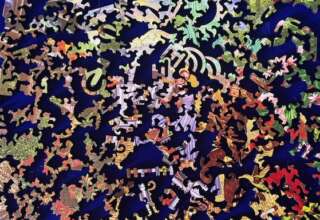
We offer this list because we believe that each of these “interests” is directly related to addressing the mid-21st Century challenges of health care—and represent some of the dilemmas (and polarities) that exist in the world of contemporary health care. This list of competing interests might easily be posted on the agenda of a select committee seeking to find ways in which best to address these challenges. The list, itself, can be approached as a series of polarities that are best confronted through the use of polarity management tools such as we Identified in our first essay (Fish and Bergquist, 2022) and that are offered in more elaborate form by Barry Johnson (1996).
Conclusions
We conclude with an historical (and hopeful) comment about complex adaptive systems that Miller and Page (2007, pg. 3) offer early in their book:
“Adaptive social systems are composed of interacting, thoughtful (but perhaps not brilliant) agents. It would be difficult to date the exact moment that such systems first arose on our planet—perhaps it was when early single-celled organisms began to compete with one another for resources or, more likely, much earlier when chemical interactions in the primordial soup began to self-replicate. Once these adaptive social systems emerged, the planet underwent a dramatic change where, as Charles Darwin noted, ‘from so simple a beginning endless forms most beautiful and most wonderful have been, and are being, evolved.’ Indeed, we find ourselves at the beginning of a new millennium being not only continually surprised, delighted, and confounded by the unfolding of social systems with which we are well acquainted, but also in the enviable position of creating and crafting novel adaptive social systems such as those arising in computer networks.”
We have walked you through several of the vital components and behaviors of Complex Adaptive Systems, highlighting the very adaptive nature of flocks to utilize proximal feedback to rapidly adapt to external threats within the flock. We have provided a series of games and activities that represent the four states of organizations, with a reflection on how simple organizational processes and states may be automated via computers and AI, and how complicated and complex states and processes will likely remain the primary domain of humans, perhaps with AI-assistance.
We have made the case that having the right mind-set to recognize when an organization is itself a complex adaptive system or addressing highly complex challenges can provide healthcare leaders with a variety of ways to assure successful adaptation—using self-organizing teams with robust feedback and psychological safety, probing the system and watching and enabling adaptive emergent behaviors, monitoring mal-adaptive or potentially destructive emergence while asserting constraints to limit negative impact on the organization. Some have called these “strange attractors.” These are processes and behaviors that draw an organization toward a new desirable state (Gilstrap 2005)
In our second essay in this series on complex adaptive systems we will offer some additional insights regarding the dynamics of complex adaptive systems while probing more deeply into the implications of these insights regarding the operations and leadership of contemporary health care systems.
______________________








